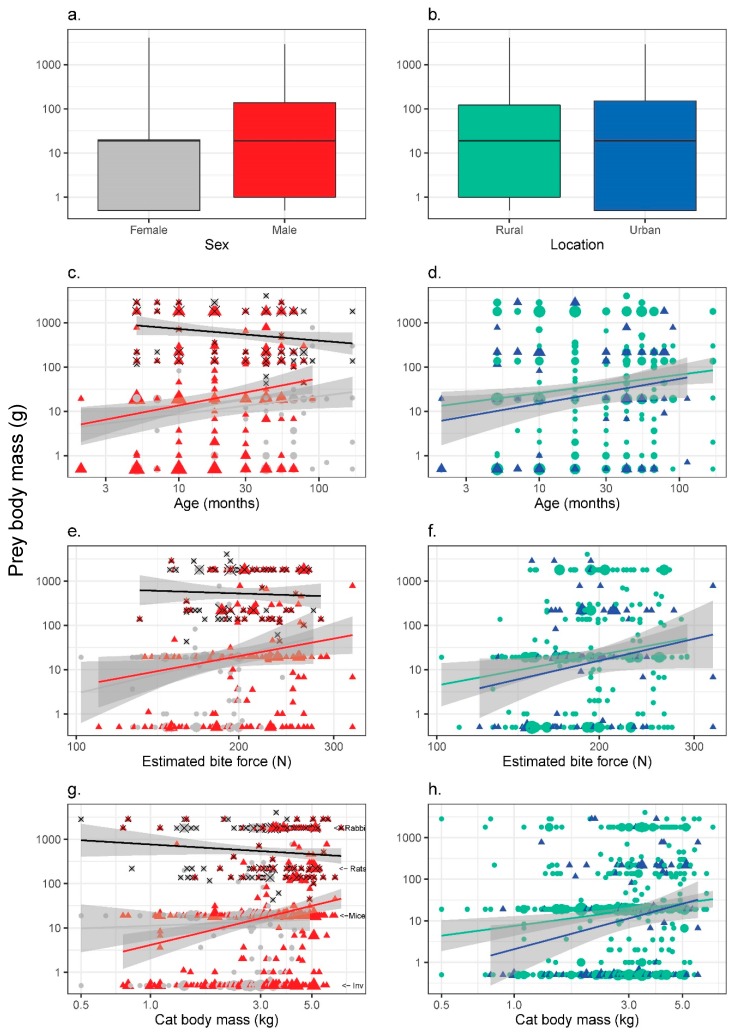Figure 3.
Prey body mass (average body mass for an adult of that species) consumed by cats (Felis catus) from southwest Western Australia shown by (a) sex (left-hand panel; males = red triangles and females = grey circles) or (b) source location (right-hand panel; rural = green circles and urban = blue triangles). Prey body mass shown against age (c,d), estimated bite force (e,f) and cat body mass (g,h). Note Log-transformed axes. Due to overlapping data, symbol sizes represent relative numbers of prey items. Diet was determined for some small cats that we could not determine bite force for (and therefore the x axis has a lower minimum value compared with Figure 2). The most common prey items are indicated in (g): European rabbits (Oryctolagus cuniculus 1.8 kg), black rats (Rattus rattus 220 g), house mice (Mus musculus 19 g), and invertebrates (all grouped as 0.5 g). Prey that might be perceived as requiring greater hunting skills (‘dangerous’ prey) are indicated with a black cross and the black regression lines in left-hand panels.

